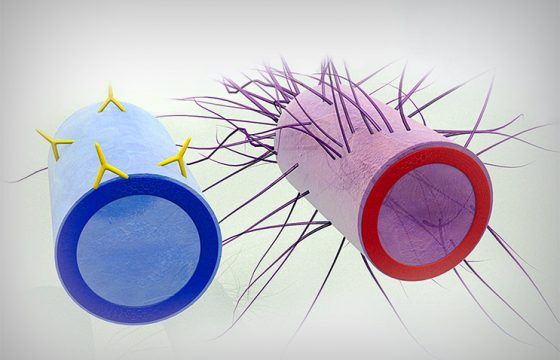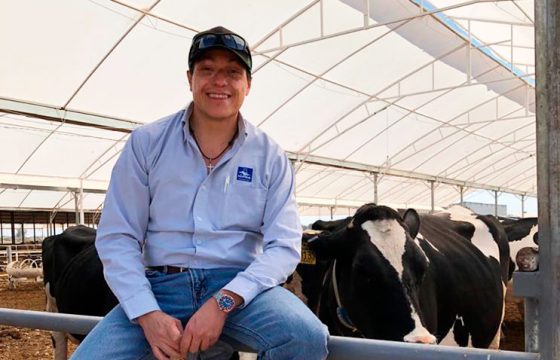A journey from Spain to Latin America through milk quality
Rafael Ortega works as a Technical Customer Service Specialist for HIPRA in Latin America. With more than 30 years of experience in Milk Quality (mainly in Spain and LATAM), he’s explaining to us here how the industry has changed since he started.
Interview with Rafael Ortega
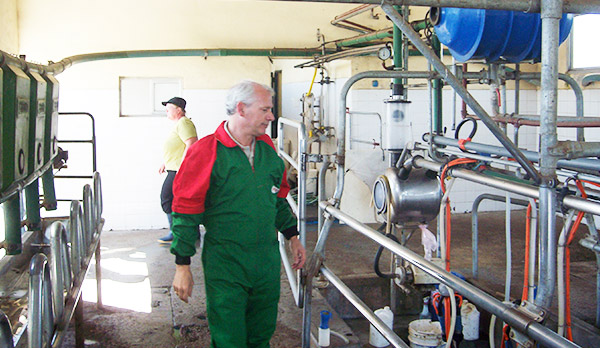
Which were the main problems on dairy farms when he started to work with them? Which was the role of Milk Quality vet in the past and now? Is vaccination against mastitis a tool to improve Milk Quality and farm management? Let’s see what he said…
1- Rafa, tell us a bit about your experience until now…
I started working as a vet in livestock sanitation campaigns in the Principality of Asturias (Spain) around 1985 and then for 2 years as on Departamanto de Microbiología y Virología de la Consejeria de Agricultura y Pesca del Principado de Asturias.
After more than 10 years, I specialised in Milk Quality as a programme coordinator in the Centro Técnico Veterinario La Espina – Salas- Asturias.
In the 90’s decade, there weren’t lots of veterinary centres specialised in Milk Quality and the main milk industry (as Danone, for example) contacted us to work on the farms where they collected milk.
In 2010 I joined HIPRA after some time of collaboration with them trying the new vaccine they launched against mastitis. They offered me the possibility of doing milk quality training in South America on a sporadic basis (2-3 times per year), in Argentina, Uruguay, Peru, Brazil etc. Until the time came when they offered me the possibility of staying in Brazil to work from there.
Additionally, was coautor of a milk quality book published on 2016 called “Guía del asesor veterinario en calidad de leche” .
2- How were the farms and work in Milk Quality when you started working on it in Spain?
In general, the facilities (animal welfare, beds etc), had quite a few defects, the general hygiene of the beds was deficient, and the milking routine left a lot to be desired; and on the other hand, the milking machines suffered from plenty of maintenance problems.
At the same time, genetics were improving, as was nutrition, and production per cow was beginning to increase. This led to further intensification of the animals, beginning to build more free stalls, warm beds, etc.
After a few years, the “reconversion of the dairy sector” got under way. It meant a reduction in the number of farms but an increase of animals per farms and kept the number of animal stable, even increasing them per farm.
Another important point are the EU subsidies for milk quality programmes. When they began, more dairy industries gradually joined the programmes, cooperatives, etc., and more veterinary specialists in milk quality also began to appear.
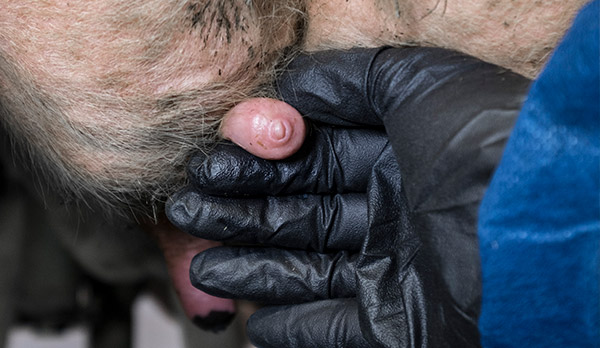
3- The milk market is increasingly demanding for farmers. What are the main requirements that we can find worldwide in the dairy sector? Who are the responsible for these requirements?
In a globalised market like ours, and more so in the case of products intended for human consumption, the main demands comes precisely from the consumer, who is the principal driver.
Within this context, the dairy industries require producers to deliver a product in which the full traceability of the milk their cows produce and the condition of the cows that produce it is known.
Milk must meet some physical-chemical and sanitary requirements; and we need to know in what welfare conditions the animals are in, and the care the farm takes of the environment.
4- In the prevention of mastitis, do we need to act on different points? Which are the most important?
Mastitis is a multifactorial disease, so we need to act on several pillars, which could be summarised in 4 points:
- Cow comfort or animal welfare
- Milking machine
- Milking routine
- Cow (prevention with vaccines, subclinical mastitis – SCC, clinical mastitis and treatments)
5- You mention that one of the key points for the prevention of mastitis is vaccination, but are all farms suitable for its implementation?
In relation to mastitis and milk quality, it is very common to hear that, before using a mastitis vaccine, the producer must correct other things such as beds, routine, milking machine, etc.
Improving management is usually a good step but also mastitis vaccines alone manage to reduce the “Reproduction Ratio”, an epidemiological index that, in other words, means “Infection pressure”.
We have published studies in this regard with “STARTVAC – TOPVAC” which speak, for example, of a reduction in the infection pressure of up to 45% for mastitis by S. aureus within a farm.
In general I would say that you can use them in all farms, with the exception of farms with very bad management. Nevertheless it is important to show the producer his return on investment.
6- What should be the steps to follow on a farm that wishes to implement a vaccination programme?
From my point of view, the main steps are:
- Knowing what is the main mastitis problem: is it environmental or contagious pathogens?
- Collecting all the necessary data in relation to the 4 pillars mentioned above.
- Working at the same time on non-specific immunity (cow comfort, milking machine, milking routine, subclinical and clinical mastitis, etc.) and specific immunity (applying the mastitis vaccine).
- After 1 year, comparing results (before and after the use of the vaccine).
- Explaining the return on investment.
- Continuing to monitor the farm.
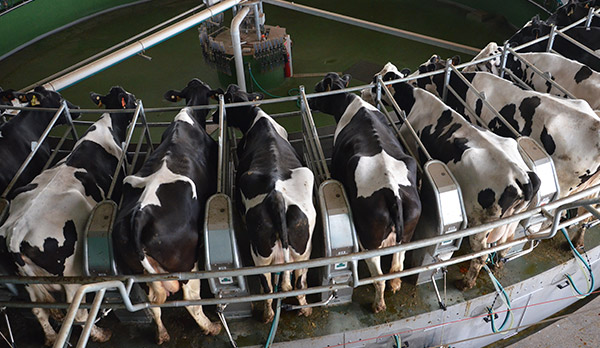
7- How do you see the evolution of milk quality and farms in Brazil?
When I arrived in Brazil back in 2014, the quality of the milk needed to improve a lot. As it is a country that is the size of a continent, let’s say that it has different situations in relation to the size of the farms, the level of production of the cows, types of milk producing breeds, weather conditions, etc.
Milk was collected primarily for quantity and not for quality. Few dairy industries paid for quality. The regulations in relation to the delivery of raw milk for the industries had different parameters from the European ones; so, for example, the SCC level was 700,000 cells/ml.
In relation to maintenance and parameter settings, milking machines were highly deficient – perhaps, in my own humble opinion, the worst that I had encountered, and which, to this day, still need to improve a good deal. Few veterinary groups working on milk quality, some agricultural technicians, zootechnicians, etc.
The interest in improving milk quality has evolved positively, and today we have more professional producers, more dairy industries paying for quality, more specialists in milk quality, etc. We have farms delivering very good, high-quality milk, although there is still a long way to go.
We could say that the Brazilian dairy sector needs to change the Regulations in relation to sanitary parameters, plus changes in the producer’s mentality, and that more milk quality programmes need to be developed by veterinary teams.
8- How do you see the evolution of milk quality and farms in Brazil?
If we are talking about pharmaceutical industries, here in Brazil we have few that offer technical advisory support on milk quality. For example, here in Brazil HIPRA sells a concept; that is to say, the commercial part with mastitis vaccines linked to the part regarding technical advice on milk quality.
Recently, HIPRA has also launched UBAC® in Brazil, increasing the pathogens we can help protecting the cows against, following the same philosophy of follow up and cooperating with the stakeholders to achieve the best results.
It is something that is working very well here. We do it for both veterinary groups and dairy industries (Tirol, Aurora, Lactalis, Danone, etc.), cooperatives (Santa Clara, Cotrisal, Cotrijal etc.) and distributors (Basso Pancote etc).
If we are talking about Dairy Industries (Nestle, Lactalis, Tirol, Gran Mestri, Danone. etc.), Cooperatives, Distributors, Veterinary Groups etc., they have milk quality plans implemented in their producers.
In short, although there is still a long way to go, the willingness is there, and with the dairy potential that this country has it can be in the future a reference in milk production.
